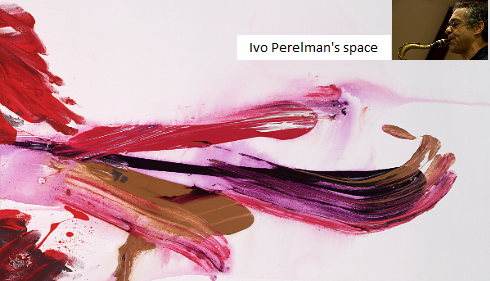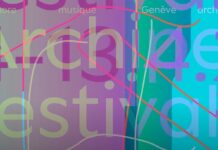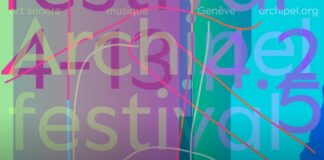In musica si cerca sempre di dare spiegazioni al ruolo che i musicisti svolgono nei processi esecutivi. Chi sono? Medium espressivi? Portatori di messaggi? E’ qualcosa che ha a che fare molto con quanto scriveva Sartre a proposito delle relazioni tra le idee e le sensazioni, nel momento in cui stabiliva un criterio oggettivo con cui valutarle: l’idea è un percorso preciso, dai contorni definiti, mentre la sensazione si cristallizza in un’immagine riassuntiva che è il risultato di una serie di stimoli mentali non esattamente definibili.
Per i suoi trent’anni di attività discografica, Ivo Perelman ha voluto con lui il suo indispensabile partner (Matthew Shipp) e ha voluto insinuare una sintesi musicale con il termine “Amalgam” (questo è il titolo del cd per Mahakala Music, appena pubblicato a questo scopo): dall’esordio di Ivo nel 1990, di acqua sotto i ponti ne è passata, poiché in 30 anni su Perelman ricadono parecchie novità del jazz e dell’improvvisazione libera, che ho avuto l’onore di documentare in maniera dettagliata su questo sito. Ritornando a quando detto all’inizio ed inserendoci nel mondo musicale di Perelman, bisogna rendersi conto che il sostantivo “amalgama” non va interpretato come impasto di varia natura (chimico, alimentare, etc.) ma come “combinazione” di istinti musicali, perché quanto prodotto da Perelman con Shipp è da tempo frutto di un mettere assieme le proprie capacità per creare un prodotto comune di cui si percepiscono le qualità distintamente: in Amalgam riotteniamo quella combinazione di parametri musicali che tende all’allargamento dei confini evidenti della musica, proiezione di una sfida profusa tramite l’improvvisazione, che consiste nella formazione di un pensiero, di un’immagine complessiva in grado di far risaltare un significato; sì, la musica di Perelman è molto più logica e meno astratta di quello che si pensa! E questo si capirebbe ben presto se tutti avessimo una predisposizione maggiore verso ciò che viene 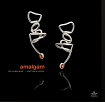 considerato asperità. Sartre si interrogò sul fatto che le relazioni espressive (una somma di percezioni anche inconsce) potessero condurre ad una dignità ed oggettività del pensiero, ciò che per me succede nella musica di Perelman e Shipp, che sfrutta le connessioni mentali per dare conto di un’arte che al suo interno ha tutte le fasi della vita: è gioia breve e dramma prolungato, è tensione e rilassamento, è congiunzione di stile e rifiuto di costruzioni predeterminate.
considerato asperità. Sartre si interrogò sul fatto che le relazioni espressive (una somma di percezioni anche inconsce) potessero condurre ad una dignità ed oggettività del pensiero, ciò che per me succede nella musica di Perelman e Shipp, che sfrutta le connessioni mentali per dare conto di un’arte che al suo interno ha tutte le fasi della vita: è gioia breve e dramma prolungato, è tensione e rilassamento, è congiunzione di stile e rifiuto di costruzioni predeterminate.
I 12 movimenti di Amalgam, perciò, vi danno l’impressione di entrare in un museo di dipinti interessanti dove si è desiderosi di scoprire ogni sensazione (visiva, tattile, olfattiva, etc.): nella Part 1 linee melodiche portate avanti da Perelman con un soffiato degno dei tempi di Webster si affiancano a linee astruse, sotto un tappeto di armonizzazioni ricco di modularità di Shipp; nella Part 2, Ivo tira fuori il vibrato e poi sembra manifestare una richiesta, qualcosa che si formalizza con successioni di note che vanno verso il registro acuto, dove la consuetudine viene battuta grazie ad un sodomizzare gli accenti con azioni in duo: nel finale mentre Ivo riesce ad elaborare persino un suono grattato, Mat ricorda che Monk è ancora vivissimo; la Part 3 è un regno della drammaturgia, note altissime e stiracchiate al sax tenore, con una tecnica estensiva che è solo di Perelman, mentre Shipp sorvola mondi con la sua sintesi; nella Part 5 un’oscurità di fondo creata da Shipp con armonizzazioni jazz senza direzione si misura con la linea melodica di Perelman, capace di rinfrancare o proporre un cammino; nella Part 6 i due musicisti vanno anche all’unisono e le divaricazioni successive permettono di comprendere l’importanza di un’improvvisazione che si snoda su tutta la gamma dei registri come sviluppo di un tema estensivo; nella Part 8, Perelman ritorna critico, quasi un lamento che si fonde con un verso soffocato, mentre nella Part 9 si assiste ad un inizio velocissimo sugli strumenti e poi, nel mezzo, a qualcosa che assomiglia ad una marcetta, un’evidenza sulla quale si inserisce e si apprezza la bravura immensa dei due musicisti; la Part 10 è impressionante, sembra di vivere una “scena”, con Mat che scodella accordi con una leggera preparazione, mentre Ivo va a raschiare i territori dei registri bassi del suo sax, quando poi all’improvviso si apre un arpeggio che serve come introduzione ad una nuova modificazione delle sensazioni vissute.
Nel giudizio dell’intera gamma stilistica di Perelman va detto che Amalgam evita di entrare in profondità ed interezza negli abissi complessi dell’espressionismo astratto così come lambisce il jazz con leggerezza: insiste sulla manifestazione più pura della rappresentazione, quella formulata all’istante, alla caccia di un perfetto equilibrio delle variabili emotive.
________________________________________________________________________
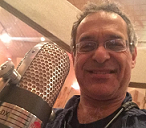
For the occasion of the thirtieth anniversary of Perelman’s discography, it seems appropriate to take stock of his activies and given the esteem that binds me to him, I thought to focus on the principal drivers of his artistic life. For the benefit of Percorsi Musicali’s readers, I asked him some questions. Here is our discussion:
EG: First of all I congratulate you on these thirty years of great music. I think that the Perelman of Ivo, your 1990 debut album, was different from the Perelman of today. If I have not made a mistake in my belief, I would like to know from you what has changed in the man and the musician?
IP: Looking back on this 30 years sometimes feels odd like it’s been way too long but sometimes it feels like it was only yesterday when I played the first notes of the Brazilian children song “Slaves of Job” from my first cd. Sometimes I feel that we never change as if the Universe has always existed and therefore never changed , its expansion after the big band or whatever being just another state of stillness and non-change. Under that perspective my infinitesimal 30 years as recording musician just testifies to that very fact and from that first recorded musical note of “Ivo” (1990) to “Amalgam”(2020) nothing really changed. Or at best this ” personal big band ” recording career of mine has just been just an elongated same long tone for 30 years, no change at all.
Sometimes I do feel we change with every second (I checked google and there are 31.536.000 seconds in one year).
Just recently I heard some of that first recorded cd and for sure instantly realized that I’m not the same man or musician of 30 years ago (but somehow at the core of it all the same spirit is there, the same basic urge that has compelled me to spend my days practicing the saxophone searching for a way to faithfully reproduce the sounds I’ve been hearing my head).
In a nutshell I would say that the major change that took place in the Musician has been in terms of becoming more coordinated on a muscular level with a vast comprehensive knowledge of the musical literature that preceded me. The change in the Man that most affected my art since 30 years ago has been the full realization that I am just a vessel conveying a sound message and it is all meant to be, no need to make things happen, I have learnt to efficiently tune in to the flux of life.
EG: You are a true tenor sax specialist, very careful to exploit the expressive range of the instrument. To get the best results, you have carried out constant research on mouthpieces, fingerings and sound modifications induced by a certain type of gesture (the effects of blowing, scratching, filtering, stopping notes, etc.). Can you technically explain the main discoveries you have made on this matter?
IP: It has taken me a lifetime to feel that I have accomplished a satisfying level of technical command of the saxophone and I still feel that there are many aspects that need to be perfected. Music is art and science, the more you know and advances the less you know(or at least that is how it feels like). Basically I consider myself a sound colorist and all my efforts has been in trying to achieve a flexible sax tone that covers a rainbow spectrum. The secret is in mastering the air column inside the saxophone to the max ignoring the allure that fingers and dexterity usually exert on woodwind musicians. Your air column should be THE actual 10 fingers that allow you to produce any and all subtle sounds you hear in your music.
For that I have delved into the literature of the piano, strings and more particularly brass instruments to force my air column to behave in an unsaxophonistic way. The saxophone is a woodwind/brass hybrid but very rarely treated as such. I have developed a whole new school of practicing it based on keyless trumpets and French horns before they all had the modern valve system and had to rely mainly on the embouchure to control the natural notes of harmonic series.I have been editing and revising my notes on this matter and hope to publish a saxophone method before long.
EG: You have explained to me many times that playing is like painting, there are the same dynamics; regarding your paintings I must say that they are wonderful and I admit that in painting you are a champion in the same way as in music. I continue to see improvisers training in the “abstract expressionist” style today, and this happens because they enjoy your intuitions. In your 30 years of music, this “music-painting combination” has often brought us back to Pollock’s paintings and to many artists who were part of that movement, also making us intuit a qualitative leap to music: what are the painter’s secrets that can be transferred to music ?
IP: Migrating to the the visual arts and starting to paint revolutionized my music. Visual artists are a special breed and I learnt a lot from their world. Painters are in general naturally very cultured people and I learnt from them how to have a broader perspective on the social historic implications of art which in turn ended up affecting my understanding and placement of my own music in the continuum of creative music.
The use of the eye is not an immediate instantly gratifying process like hearing music therefore it engages one’s contemplative powers on a deeper level than can only enhance music making.
I’ve learnt from painting a great deal that I applied back to music. The artistic attitude of abstract expressionist painters in particular is invaluable and can be instantly applied to jazz. The ability to empty you body and soul of any expectations in the spontaneous creative gesture does maximize awareness of being in the moment, where one acts and observes simultaneously watching your work take shape both with a deep level of connectedness and distance so the work comes out unadulterated by mental or behavioral noise. Pure sanguine art, straight from the heart.
EG: Jason C. Bivins has included you in his splendid book Spirits Rejoice !, emphasizing that your aggressive style is also a function of the rituals and expressiveness of candomblé. Speaking of improvisation, you said “… you can’t play this music without at least having an access to the spiritual world …”. I had an uncle who imagined that world, how it would have been, he incredibly explained to me all the details. Have you ever thought about the spiritual world in detail? Do you agree with me in thinking that music or sounds adequately studied, and deepened according to certain extended techniques or according to a study of perceptual phenomenology, can make us enter into imaginative dimensions revealing a God?
IP: Music and sounds are for me the key to enter the spiritual world, a contemplative non verbal state where the Divine truth is achieved. Words and language first appeared to develop and foster social dynamics to enhance communication and assure survival of the species. Once that was achieved successfully it became a hindrance to humanity because it can only capture a small fraction of reality and has been many times used as destructive manipulative dark political forces. That is why I love Clarice Lispector, she reinvented the use and meaning of language and came close to turning it into music.
I don’t trust words anymore, I trust sounds. They go to the source of the human experience evoking primal times, energetic fields of creation and destruction, all what God is about.
Life on earth is too short to be wasted with less than optimal tools for self discovery and for fully experiencing the eternity of the NOW, the present tense, the only richness we have. I haven’t spent much time lately with words, I try to spend most of my time with the saxophone.
EG: Your partnership with Matthew Shipp will be remembered in history, because you and Mat have created a new style, a new scenario for music and art; you continue to work with him despite your declaration in which you said that the exploratory potential with him had come to an end and we’re happy of it, of course. With Mat you created a way to update jazz, but I wonder what was the source of inspiration in the field of the relationship between a tenor sax and a piano: in the history of jazz or improvisation was there something that struck you and from which you learned?
IP: I basically fell in love with Jazz, the whole Jazz experience and not a particular aspect of it that struck ever since I was exposed to it in my late teens discovering the music of Paul Horn, Wayne Shorter, Jimmy Noone and Stan Getz. These musicians whole art s spirit talked to me in a huge way, I got it immediately and intravenously! Back then it seemed to be such a brave complex new world to be conquered and yet so direct and easy to understand( which by the way still feel to me at different levels).
But your question now just gave me an insight that has not caught my attention yet. There was a cd that became a turning point for me and may in part explain my eternal musical honeymoon with the work of Matthew Shipp. The John Coltrane/ Duke Ellington session was the first Cd I got when Cds appeared in the USA around 1987. It had a profound effect on me, both its musical content and new digital presentation.The music sounded so special encompassing the whole gamut of jazz history with two major masters there were a generation apart and managed to bridge this gap quite elegantly. Also the digital format fascinated me, I could hear the subtle and not so subtle change in sound frequencies.
So maybe that Coltrane/Ellington/sax/ piano format sank in my unconscious then paving the way for the future.Little did I know back then in those music student days in Los Angeles that one day I was to meet another jazz master and be able to develop a long fruitful creative career in the same sax/piano duo format.
EG: Today your discography is gigantic and people need a whole shelf just for you. In an era in which the role of recordings is minimized (due to digital files), you continue to design works in a traditional way, CD with art covers and liner notes, where also the record collector is satisfied. Many think that the CD is no longer necessary and that improvisation continuously recorded in media could for an artist mean a logorrheic repetition. What would you answer to these detractors?
IP: I just looked up the meaning of “logorrhea” (pathologically excessive and often incoherent talkativeness or wordiness that is characteristic especially of the manic phase of bipolar disorder) and nothing is more dramatically further away from the truth than that in regards to true creative music.
I guess that notion about Jazz in recent times is a byproduct of the end gaining pragmatic feeling that is pervasive in our modern society. Jazz is poetry and Philosophy and therefore has no practical use anymore in such times. Who is patient these days to listen to its message when 4G light speed Iphones are turning everyone into spoiled restless children?
A Jazz musician is deeply and organically dissecting all aspects of life distilled in a highly creative art form that requires not only sensibility on the part of listener but high intelligence as well. Too much to ask I guess.

